The longest-range hit ever by a battleship at sea was approximately 26,400 yards,1 made by KMS Scharnhorst on HMS Glorious in the North Sea.2 Glorious was making at least 17 knots at the time, and it only took Scharnhorst 3 salvos to make the hit. Iowa’s 16” guns themselves had a normal maximum range of approximately 40,000 yards.3 Coincidentally, that is almost exactly the distance from where the ship is moored to Catalina Island, visible on a clear day. What made gun ranges like these practical?
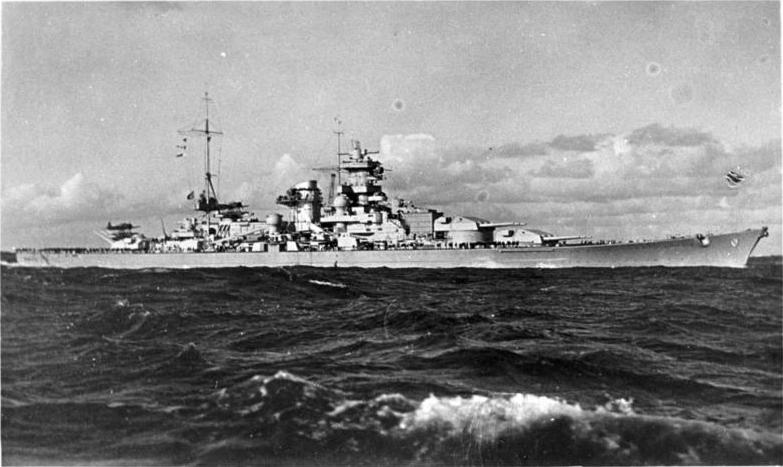
KMS Scharnhorst
In the 1890s, naval gunnery was still limited to very short ranges, with 1000 yards being considered the outer limit of effective fire. This was little better than had been possible a century before, despite massively improved guns, and stood in stark contrast to land-based guns, which had seen an order-of-magnitude increase in range during the same period. The problem was the movement of the ship, which made precise shooting as practiced on land totally impossible. There had been a few attempts to solve the problem during the 19th century, but none were particularly effective until that of Captain Percy Scott, RN, in 1898.
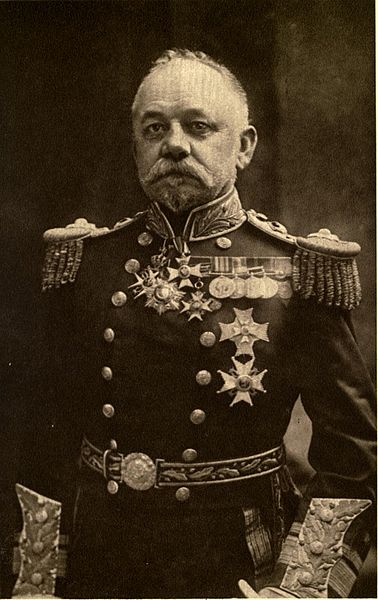
Admiral Sir Percy Scott
Scott, captain of the cruiser HMS Scylla, replaced the traditional practice of attempting to sight the guns to be on target at the end of the ship’s roll (with the accompanying errors that this estimation caused) with continuously elevating the guns to keep them on target as the ship rolled. Continuous aim, as the technique was known, resulted in a sixfold increase in Scylla’s yearly gunnery score in 1899. This was revolutionary, but there were a few problems. First, it was only feasible on lighter guns, up to about 9.2”. Heavier guns could not be elevated quickly enough to track the ship’s roll, which, when combined with the recent improvements in rate of fire for light guns, made them much more powerful than the heavy guns for a short period. Second, it relied entirely on the skill of the crew, and had limited potential for growth. Third, it only stabilized the gun along the line of sight (level), leaving motion at right angles to the line of sight (cross-level)4 unstabilized, a problem that wouldn’t be solved until the 1930s. Fortunately, roll is the most important motion of a ship, and level correction is adequate when firing broadside.
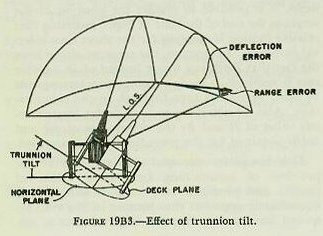
The effects of trunion tilt, stabilized by cross-level.
To solve the problem of cancelling out motion for heavy guns, Percy Scott came up with a new solution, the director, which also solved several other problems. This was essentially a dummy gunsight, mounted high up in the ship and set up to pass firing data to a number of other guns, after compensating for the differences in position. This gave several advantages. The director crew was separated from the blast and smoke of firing, and all of the guns were fired from the same key, which gave a tight salvo and a predictable pattern, which was vital to making use of spotting (which we’ll come back to). However, to take full advantage of this, the closely related factors of target range and motion had to be taken into account.
At short range, neither mattered much. The trajectory of the shells was flat enough that they would hit even with considerable errors in range (this was called the ‘danger space’, the range interval in which a shell falling long or short of the target would still hit) and the target did not move far enough in the short flight time to pose a serious problem. However, the quest for longer ranges (driven in large part by the need to outrange rapidly-improving torpedoes) forced solutions for both to be developed.
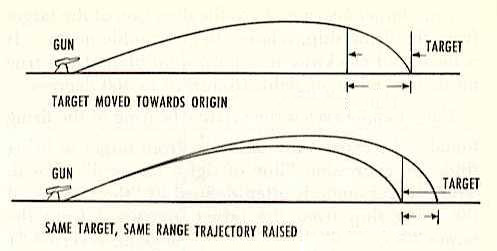
Danger Space
Rangefinding was a matter of equipment. Several different approaches were tried, but eventually all navies converged on a fairly small binocular rangefinder. These work via essentially extending the baseline between the operator’s eyes, and letting them line up objects at the chosen range. The rangefinder then works out some trigonometry to find a range.
There were still two problems to be solved once adequate rangefinders had been developed. First, the range that the rangefinder produced was not the one that the guns needed to shoot on, because the target was still moving. Second, getting the data from the rangefinder to the guns was a serious problem. The first problem was partially solved when it was realized that the range rate was independent of range, and only depended on relative courses and speeds. What were essentially specialized slide rules were developed to calculate the range rate and bearing rate (speed across), which were then multiplied by time of flight to get the offsets from the current positions to set the sights. The problem was that solution changed as the relative positions of the ships did, forcing constant updates. Also, the lack of feedback prevented cross-checking of the solutions. Efforts were made to solve these problems starting around 1910, although with only limited success.
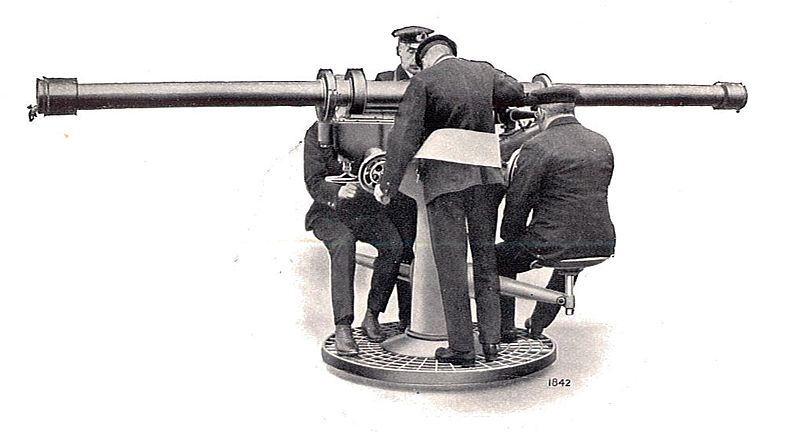
A Naval Rangefinder
Data transmission was initially by voice, but the din of battle made this a poor method at best. The next step was to use a step-by-step transmitter, which moved a receiver a set amount with each pulse from the transmitter. This also had problems, because it would become misaligned if the transmitter turned too fast or if power was lost to one end, and any changes in the connections required realignment. On the gun itself, the receiver was not powerful enough to drive the mechanisms directly, so an operator would manually match the position the computer requested, known as the ‘follow-the-pointer system’.
Even with all of these systems, hitting was still not assured. Errors in the solution, wind, and random chance all meant that some form of feedback was necessary. An observer, usually near the director, would watch the fall of the shells and estimate where the splashes were relative to the target, then relay those corrections to try and put the next salvo directly on the target. This practice was known as spotting. Spotting worked much better on a coordinated salvo than with individual guns, and the shells tended to fall into a more or less circular area of the sea. If that area (known as the pattern) was placed on the target, hitting was in theory just a matter of time. Elaborate rules were developed to make best use of spotting data in adjusting the solution to straddle5 the target, the ideal case for a hit.
Naval gunnery made great strides in the first two decades of the 20th century, but while development slowed after World War I, it didn't stop, and by the time WWII broke out, it had been refined to an incredible degree. We'll look at the best of those systems next time.
1 15 statute miles ⇑
2 An honorable mention in the 'longest-range hit' contest is a hit by HMS Warspite on the Italian battleship Giulio Cesare in the Mediterranean. This is normally given as occurring at a range of 26,000 yards, although there's a fair bit of uncertainty in both ranges. Are you happy now, John? ⇑
3 This is 22.7 statute miles. The exact value varies slightly depending on shell type and barrel wear. ⇑
4 Cross-level is harder to compensate for, as it moves the gun in both elevation and train. ⇑
5 A straddle is where shells are landing both short and long. ⇑
This post is an update of a post first made on SSC.

Comments
Love the illustrations.
Are you ever worried that tricking many of us into reading all the battleship posts repeatedly will suck up all the available spare time in the universe?
If you think that's bad, you should try writing them.
The reason this was at the top of the repost list was that I'd kind of planned to keep talking about fire control and related subjects, and I wanted to have the whole series here, instead of referring back to old posts on SSC. Also, the newer posts are generally a lot easier to update, because I've gotten better at writing and learned new things since then. These were just a matter of pictures and a humorous footnote. Some of the earlier ones will take total rewrites.
I enjoyed this post whet it first appeared on SSC. Enjoyed it even more here with the images. Thanks!